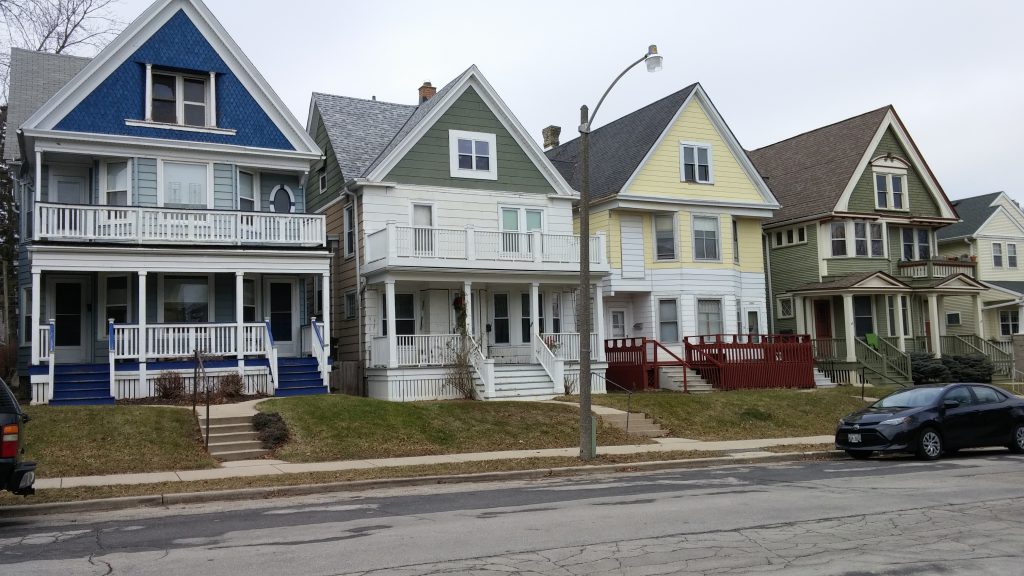Mortgage Crisis Hit African Americans and Hispanics Hardest
Drop in homeownership among African-Americans and Hispanics underlines an affordable housing crisis since the Great Recession.
A new report by the Wisconsin Realtors Association (WRA) documented how the Great Recession most reduced home ownership by African-American and Hispanic families.
The report, “Falling Behind,” says the statewide failure to add single- and multi-family homes hits low- and middle-income workers needed to keep the state’s economy growing the hardest.
It’s a dangerous trend, the report warned:
“We are not building enough housing to keep up with demand for our growing workforce. Our existing housing stock is aging, and construction prices and housing costs are rising faster than inflation and incomes.
“Housing costs and rents are rising faster than incomes, too. Compared to our neighboring states, we have the highest rate of extreme rental cost burden for lower-income families and the second highest rate of extreme cost burden for lower-income homeowners.
One example: In 51 of the state’s 72 counties, middle-class residents either cannot afford or can “barely afford” average local rents.
The report also included county-by-county totals on housing “underproduction” – defined as the gap between growth in households and growth in housing units – between 2006 and 2017.
Two of Milwaukee County’s four neighboring counties “underproduced” in housing, and two saw housing surpluses in that period, according to the report:
Waukesha County added 13,199 households and 10,986 housing units; Washington County added 4,019 households and 4,289 housing units; Ozaukee County added 2,909 households and 2,082 housing units, and Racine County added 2,319 households and 2,645 housing units.
But the most stunning statistics documented by race who owned Wisconsin homes in 2007 – before the Great Recession – and in 2017.
*In 2007, 72% of Wisconsin’s white households owned a home; in 2017, that number had fallen to 70% – a drop of only 2%.
*In 2007, 43% of Wisconsin’s African-American households owned a home; in 2017 that number had fallen to 35% – a drop of 8%.
*In 2007, 47% of Wisconsin’s Hispanic households owned a home; in 2017 that number had fallen to 40% – a drop of 7%.
Home ownership is still considered a gateway to the middle class. A home is a couple’s single largest investment.
UW-Madison Professor Kurt Paulsen, who wrote the report, said in a WisconsinEye interview that Wisconsin has the sixth biggest gap between home ownership by white and African-American households in the nation.
The new gap – white Wisconsin households twice as likely to own a home as African-American households – “shouldn’t surprise anyone who researches housing for a living,” Paulsen said.
Nationally, about 45% of African-American households own their home, Paulsen noted.
Paulsen said Milwaukee statistics dominate the figures for home ownership by black families. Of all large American cities, Milwaukee has the third largest gap between home ownership by white and black households, he said.
Paulsen said mortgage foreclosures triggered by the Great Recession hit African-American and Hispanic households the hardest.
Democratic Rep. David Crowley, of Milwaukee, chairman of the Legislature’s Black and Latino Caucus, said black families lost jobs and then lost their homes.
“African American communities have been hit especially hard when it comes to home ownership decline because of the sharp drop in jobs that provide a living wage within the urban centers with high African-American populations,” Crowley said in a statement.
“The loss of jobs accompanied by two decades of mass incarceration and over policing has shattered our communities and our families.”
State and local elected officials must do more “to promote African-American homeownership and that starts with jobs, transportation, and ensuring all communities of color have the financial ability and access to loans to become homeowners,” Crowley added.
Realtors Association Senior Vice President Tom Larson, who joined Paulsen for the WisconsinEye interview, said the sharp drop in home ownership by minority households “highlights the need for additional housing – especially in the “starter home’ category.”
“That’s where [Wisconsin] has the greatest deficiency,” Larson added.
As a first step toward reversing the trend of not enough housing being built for home owners and renters, Larson said the Legislature should enact a tax break for first-time home buyers.
In February, Democratic Gov. Tony Evers recommended giving individuals a $5,000 annual tax deduction, and couples up to $10,000, to help them buy a first home.
Republicans who control the Legislature refused to consider it, however.
Steven Walters is a senior producer for the nonprofit public affairs channel WisconsinEye. Contact him at stevenscotwalters@gmail.com
Political Contributions Tracker
Displaying political contributions between people mentioned in this story. Learn more.
The State of Politics
-
A Wisconsin Political Trivia Quiz
 Dec 15th, 2025 by Steven Walters
Dec 15th, 2025 by Steven Walters
-
The Fight Over Wisconsin’s House Districts
 Dec 8th, 2025 by Steven Walters
Dec 8th, 2025 by Steven Walters
-
The Battle Over On-Line Betting
 Nov 24th, 2025 by Steven Walters
Nov 24th, 2025 by Steven Walters






















